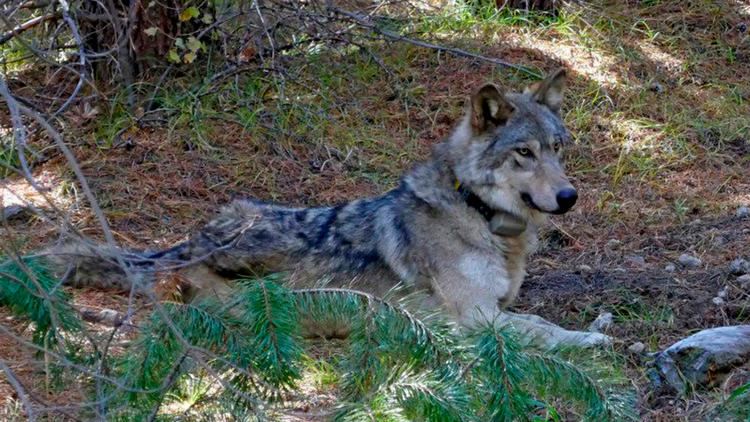PORTLAND, Ore. — Oregon wildlife officials said Tuesday they have identified a new family of wolves in the northern Cascade Mountains, bringing the total number of known wolf groups in the region to three.
The state Department of Fish and Wildlife confirmed the new family of wolves with two adults and two pups. They were discovered in December on the reservation of the Confederated Tribes of Warm Springs, about 100 miles (160 kilometers) southeast of Portland.
Tribal biologists have documented their locations using trail cameras, most recently in August.
“Wolves will disperse to different places, but when we have resident wolves, like we know they’re sticking in that area, that’s when we create something called an 'area of known wolf activity,’" said agency spokesperson Michelle Dennehy.
The new area includes parts of Jefferson and Wasco counties. If the group still has at least four wolves by the end of the year it will be named the Warm Springs Pack, the department said.
Environmental groups welcomed the announcement.
“I hope this will be an exciting new chapter in the story of wolf recovery in the state, which is seeing wolves dispersing into territory where they haven’t lived for decades,” Amaroq Weiss, senior wolf advocate at the Center for Biological Diversity, said in a statement.
Wolves once ranged across most of the U.S. but were nearly wiped out by the 1930s under government-sponsored poisoning and trapping campaigns.
The Oregon Department of Fish and Wildlife counted at least 175 wolves in the state in 2021, an increase of just two from the previous year. It was the slowest rate of wolf growth since 2016, although agency officials did add that wolves expanded their range into four new areas of activity in rural areas in Jefferson, Klamath, Grant and Union counties.
The number of documented packs in 2021 decreased from 22 to 21 after an entire pack was killed by poisoning in eastern Oregon. Of the 26 wolf mortalities documented that year, 21 were caused by humans, according to the agency.
The Warm Springs group of wolves is the third to be documented in the northern Cascades region, along with the White River group's three wolves and the Metolius group's two.
More than 3,000 wolves occupy six states in the Northern Rockies and Pacific Northwest after the animals from Canada were reintroduced in Idaho and Yellowstone National Park starting in 1995. However, wolves remain absent across most of their historical range.
In 2011, an Oregon wolf known as OR-7 became the first confirmed wolf west of the Cascades in more than 60 years. He then traveled down into California and became that state's first confirmed wolf in nearly a century. Three of his offspring have been detected in California, according to its Department of Fish and Wildlife.
Since then, more wolves have entered California from Oregon and other states. There are currently three known breeding packs in California, with two producing litters this year, according to the agency.
Wildlife advocates argue that continued protections are needed so the wolves can continue to expand in Oregon, California and other states. But wolf attacks on livestock and big game herds have angered farmers, ranchers and hunters.
In February, a judge restored federal protections under the Endangered Species Act to wolves in the western two-thirds of Oregon. The Trump administration had removed those protections in 2021.



